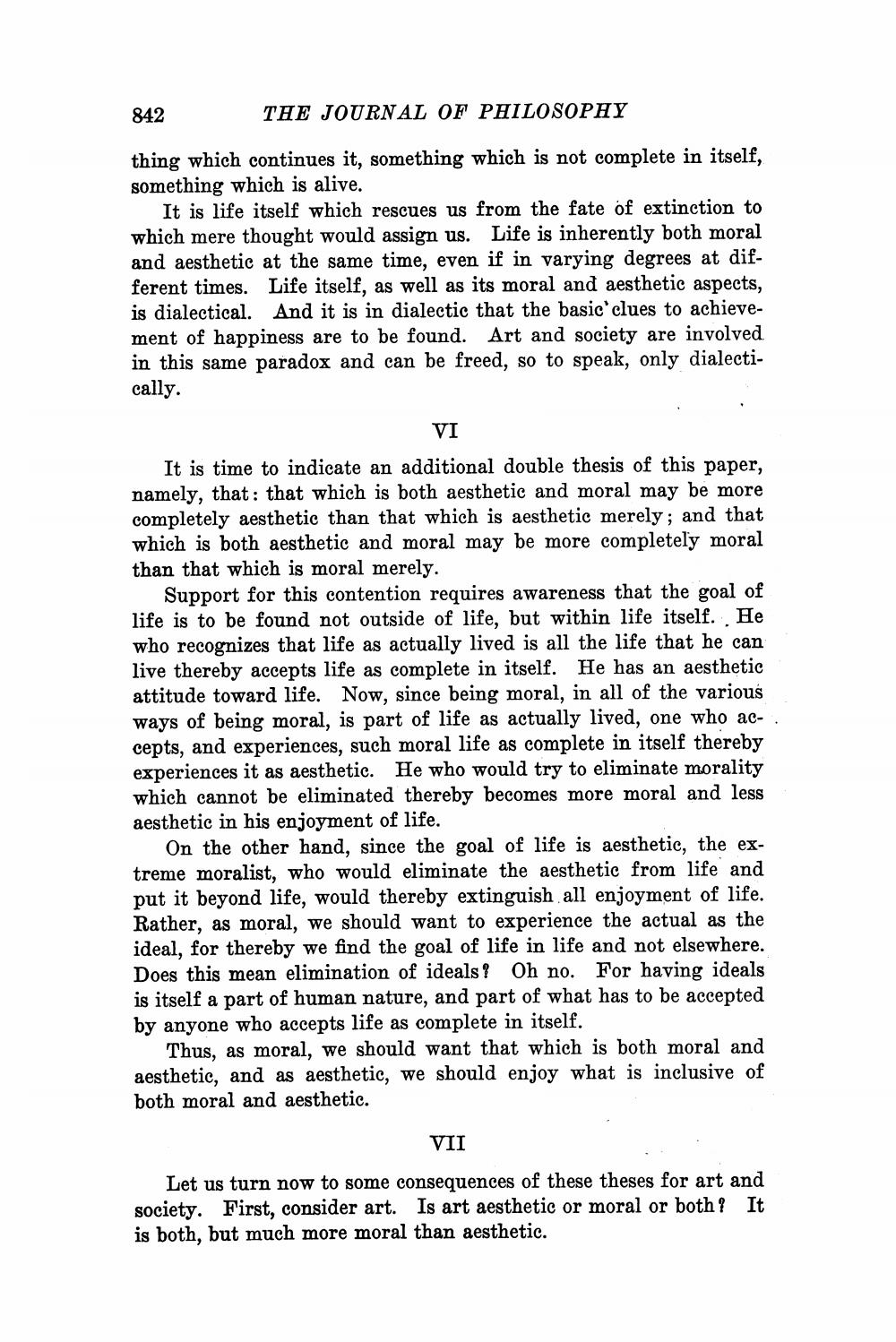Book Title: Three Essays On Aesthetics Author(s): Archie J Bahm Publisher: Archie J Bahm View full book textPage 6
________________ THE JOURNAL OF PHILOSOPHY thing which continues it, something which is not complete in itself, something which is alive. It is life itself which rescues us from the fate of extinction to which mere thought would assign us. Life is inherently both moral and aesthetic at the same time, even if in varying degrees at different times. Life itself, as well as its moral and aesthetic aspects, is dialectical. And it is in dialectic that the basic' clues to achievement of happiness are to be found. Art and society are involved in this same paradox and can be freed, so to speak, only dialectically. 842 VI It is time to indicate an additional double thesis of this paper, namely, that: that which is both aesthetic and moral may be more completely aesthetic than that which is aesthetic merely; and that which is both aesthetic and moral may be more completely moral than that which is moral merely. Support for this contention requires awareness that the goal of life is to be found not outside of life, but within life itself. He who recognizes that life as actually lived is all the life that he can live thereby accepts life as complete in itself. He has an aesthetic attitude toward life. Now, since being moral, in all of the various ways of being moral, is part of life as actually lived, one who accepts, and experiences, such moral life as complete in itself thereby experiences it as aesthetic. He who would try to eliminate morality which cannot be eliminated thereby becomes more moral and less aesthetic in his enjoyment of life. On the other hand, since the goal of life is aesthetic, the extreme moralist, who would eliminate the aesthetic from life and put it beyond life, would thereby extinguish all enjoyment of life. Rather, as moral, we should want to experience the actual as the ideal, for thereby we find the goal of life in life and not elsewhere. Does this mean elimination of ideals? Oh no. For having ideals is itself a part of human nature, and part of what has to be accepted by anyone who accepts life as complete in itself. Thus, as moral, we should want that which is both moral and aesthetic, and as aesthetic, we should enjoy what is inclusive of both moral and aesthetic. VII Let us turn now to some consequences of these theses for art and society. First, consider art. Is art aesthetic or moral or both? It is both, but much more moral than aesthetic.Page Navigation
1 ... 4 5 6 7 8 9 10 11 12 13 14 15 16 17 18 19 20 21 22 23 24 25 26 27 28 29 30 31 32
